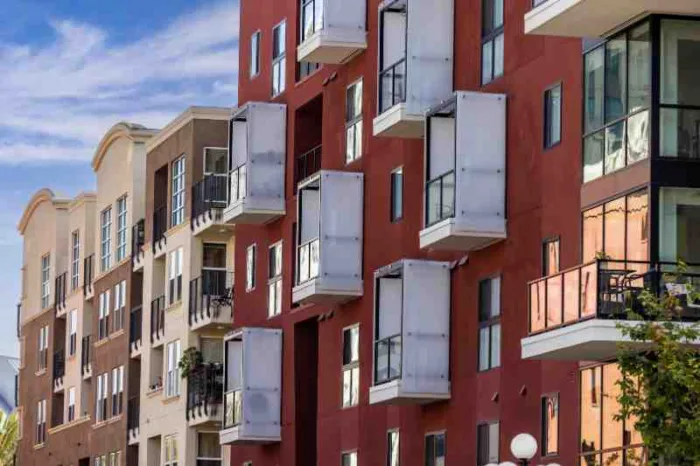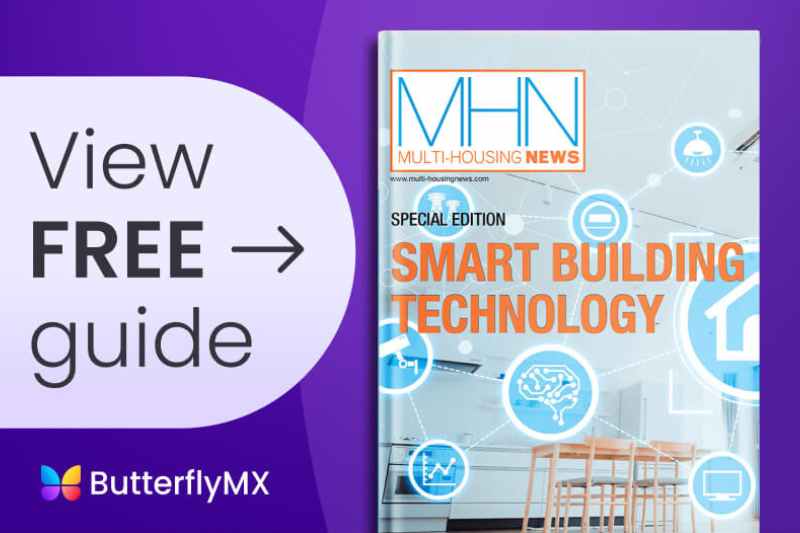Key takeaways
- Multifamily architecture concerns designing and planning residential dwellings within a single structure.
- Some key cost considerations for multifamily architecture are construction, contingency planning, optimizing space, and following local ordinances and regulations.
- The top six design trends in multifamily architecture are shared amenities and community spaces, adaptive mixed-use developments, transforming existing structures into multifamily buildings, smart home features and automation, access control, and energy management.
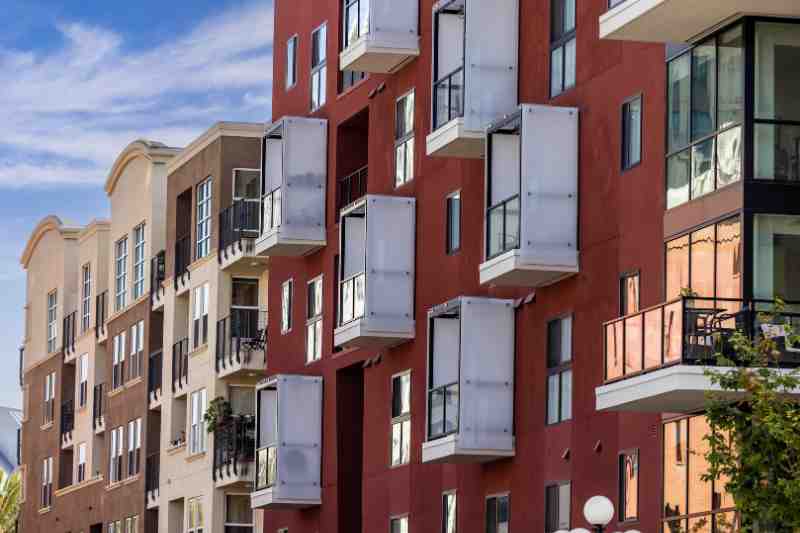
In the world of real estate development, multifamily architecture is crucial for creating thriving, livable communities that meet the needs of residents. From creating functional and engaging spaces to modernizing entry with access control, multifamily architecture is transforming how real estate professionals approach development.
Read on to learn what multifamily architecture is and explore the types of multifamily buildings. Then, discover six emerging trends in multifamily architecture.
In this post, we cover:
- What is multifamily architecture?
- Cost considerations in multifamily architecture
- Top 6 multifamily design trends in multifamily architecture
What is multifamily architecture?
Multifamily housing architecture focuses on designing and planning residential buildings that accommodate multiple units within a single structure. Through thoughtful architectural touches and purpose-driven designs, multifamily architecture helps maximize space, functionality, and aesthetics.
What’s more, multifamily development offers a wide return on investment because it’s one of the most lucrative and profitable real estate ventures.
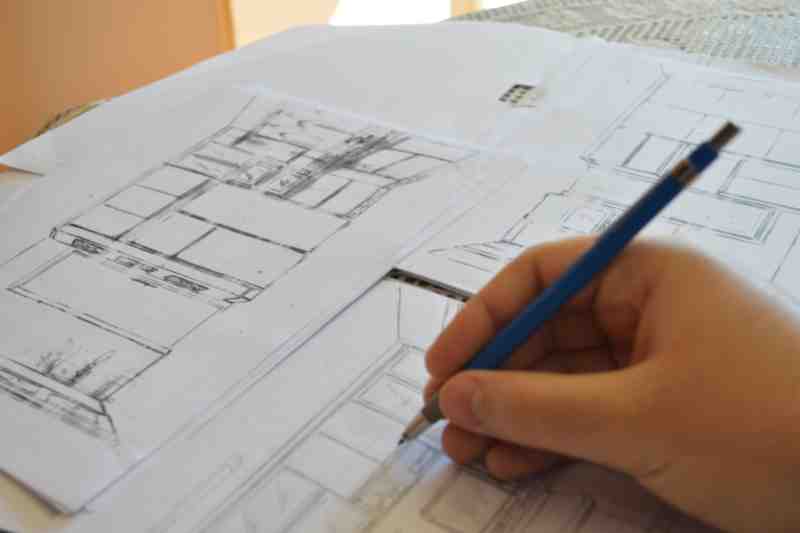
Types of multifamily buildings
Contemporary multifamily architecture plays a significant role in urban and suburban development. Why? Because it addresses the growing demand for efficient and attractive housing solutions in densely populated areas.
Modern multifamily architecture encompasses various types of residential developments like:
- High-rise buildings. High-rise apartments are high-density housing structures that have at least twelve floors. Moreover, they’re usually located in thriving city centers and often house hundreds of residents.
- Mid-rise buildings. Mid-level apartment buildings are usually found in cities and suburbs, and have anywhere from five to 12 floors.
- Townhouses and garden-style apartments. Garden-style apartments and townhouses are commonly found in suburban areas and are usually four floors or less.
Cost considerations in multifamily architecture
Considering costs helps ensure that the project remains economically viable and financially sustainable for real estate developers and building owners.
Some key cost considerations include:
- Construction. Multifamily construction costs can be enormous. Thankfully, investing in the right project management technology streamlines the building process, reduces labor costs, and can even potentially decrease construction time.
- Contingency planning. Planning to encounter unexpected expenses provides a safety net that helps avoid budget overruns.
- Optimizing space. Smart space utilization maximizes the number of units and therefore increases the amount of revenue a property can generate.
- Local ordinances and regulations. Complying with local building codes and regulations, as well as having the right permits avoids potential fines or delays that can escalate costs over time.
Top 6 multifamily design trends in multifamily architecture
Let’s explore the cutting-edge design concepts, sustainability initiatives, and technological advancements that are reshaping multifamily housing developments.
Here are six emerging trends that are transforming multifamily architecture:
- Shared amenities and community spaces
- Adaptive reuse and mixed-use developments
- Transforming existing structures into multifamily buildings
- Smart home features and automation
- Access control
- Energy management
1. Shared amenities and community spaces
Common areas and shared facilities are an essential part of multifamily architecture. In fact, these community facilities create engaging and functional spaces that benefit residents and improve retention rates.
Areas that foster a sense of community while providing residents with integrated amenities include:
- Pools
- Clubhouses
- Coworking areas
- Rooftop terraces
- Community gardens
Pro tip: Invest in an access control system with keypads to offer convenience and security by granting secure access to shared amenities.
2. Adaptive reuse and mixed-use developments
Integrating commercial and retail spaces in multifamily development is an emerging trend in multifamily architecture. Modern mixed-use buildings create “live-work-play” environments that bring together residential, office, and retail spaces to promote work-life balance.
What’s more, these mixed-use developments are not only flexible, they’re also profitable because they generate multiple streams of income.
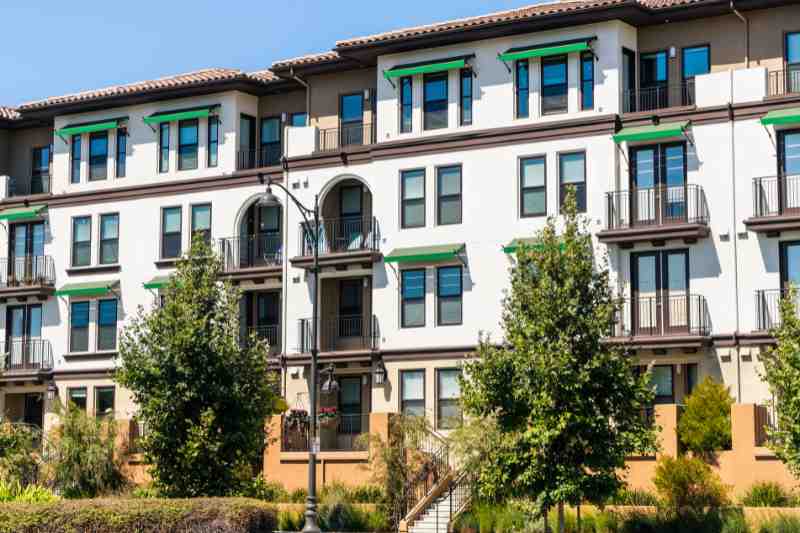
3. Transforming existing structures into multifamily buildings
Transforming existing buildings into multifamily apartments is a great way to create residential communities without having to start from scratch.
In addition, not only does transforming existing structures expedite the development process, saving time and money, but it also preserves the historical and cultural fabric of the neighborhood.
With this purpose in mind, consider converting an unused office building into hip lofts or renovating an old school building into apartments.
4. Smart home features and automation
Smart home technology and building automation are modernizing multifamily living. For example, technology like smart lighting, thermostats, and HVAC systems offers residents greater control, comfort, and energy savings over time.
What’s more, transformative smart spaces and eco-conscious technology help reinvent how residents interact with their homes by conserving energy. As a result, this will save you and them money on energy bills and attract a new generation of eco-conscious renters.
Explore 5 tips for eco-friendly apartment living:
5. Access control
Unified access control solutions revolutionize building entry by making access secure and convenient.
Additionally, smart locks and building automation systems that are integrated with cloud-based access control provide real-time monitoring and notifications. As a result, building owners and managers can keep an eye on their property from anywhere.
Access control streamlines entry for residents, visitors, and service providers by:
- Automatically granting access to users with valid credentials. Access control systems automatically unlock access points like gates and doors for residents with verified credentials like a smartphone, PIN code, or access card/key fob.
- Offering remote access management. Cloud-based access control empowers building owners and property managers to monitor and manage access permissions remotely. Moreover, this is especially convenient for real estate professionals who manage several properties.
- Smart building integrations. Access control systems integrate with other building systems, such as CCTV cameras, smart locks, and alarm systems, creating a comprehensive security network that enhances overall building safety.
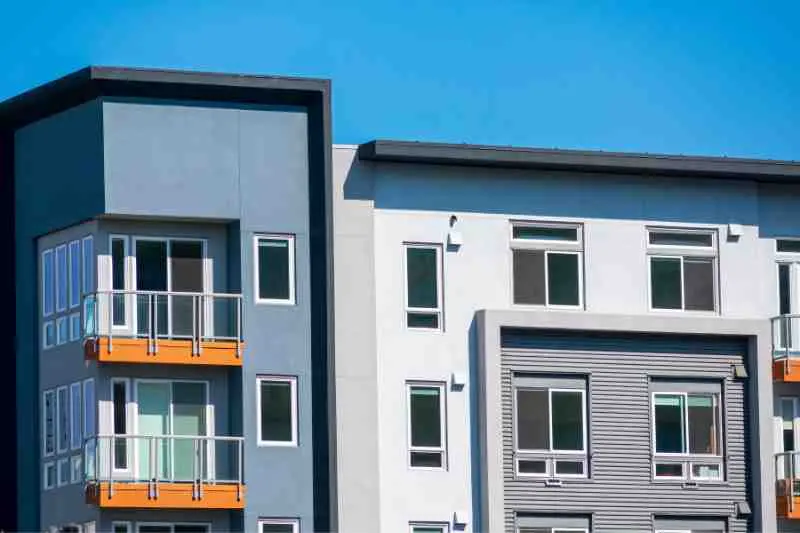
6. Energy management
Eco-conscious technology makes energy conservation efforts easier than ever in multifamily buildings. From smart thermostats to solar technology, there are a variety of ways to make modern multifamily buildings more sustainable.
Additionally, incorporating smart technology in multifamily buildings saves owners time and money in the long run. Furthermore, this technology also provides valuable insights that help owners identify areas where energy can be conserved.
Some popular types of energy-efficient smart technologies are:
- Energy-efficient appliances. Sustainable appliances like refrigerators, washing machines, and dishwashers significantly reduce energy usage.
- Smart thermostats. Modern smart thermostats empower residents to control heating and cooling remotely, optimizing energy usage.
- Smart lights and smart plugs. Smart technology like lights and plugs use sensors to turn off lights and appliances when they’re not in use.
- Solar power. Solar technology uses solar panels to generate energy in multifamily buildings. What’s more, some states provide lucrative tax breaks to building owners that utilize solar power.
- Automated window treatments. Motorized blinds or shades are programmed to open or close based on the time of day and sunlight, regulating the indoor temperature and reducing reliance on artificial lighting, heating, and cooling.
